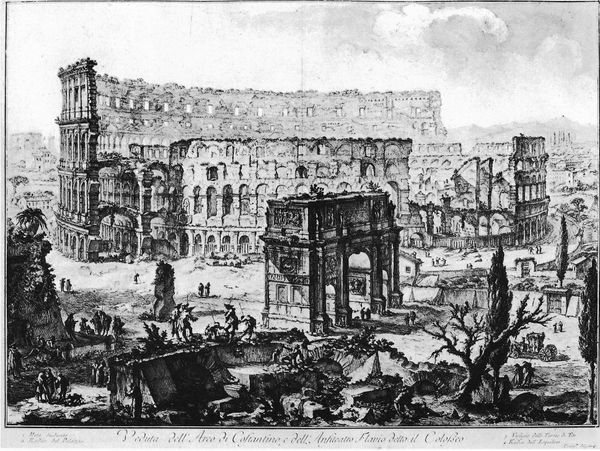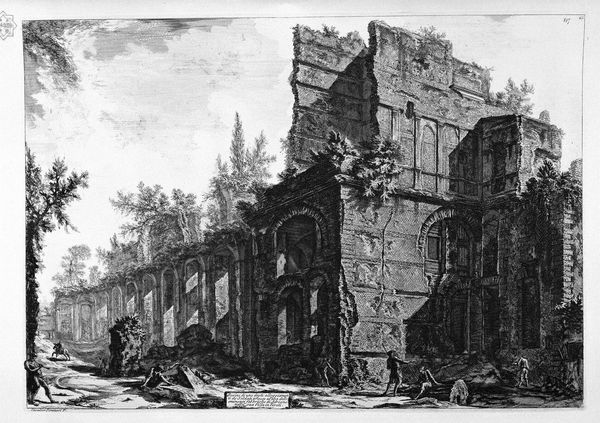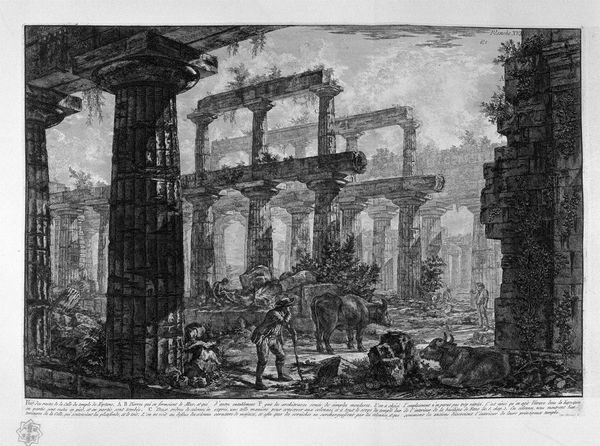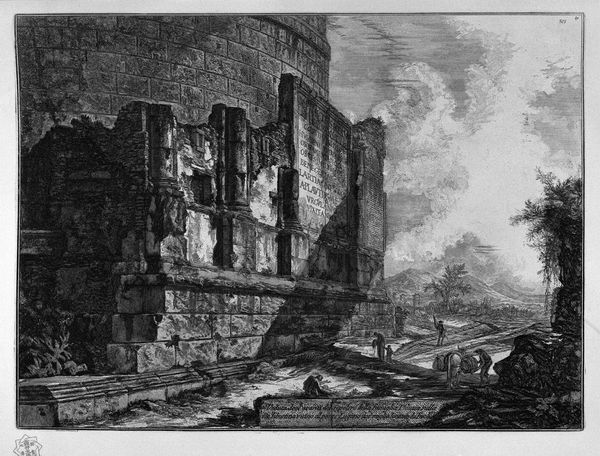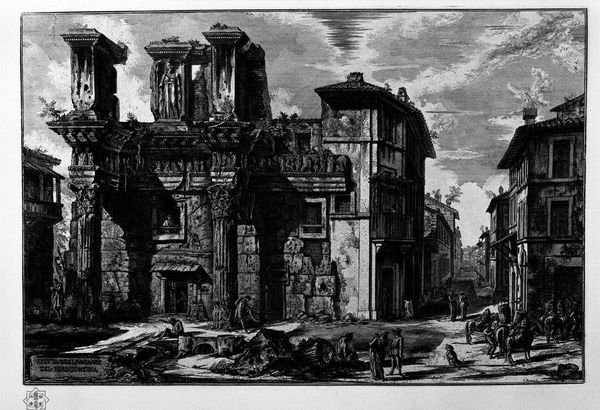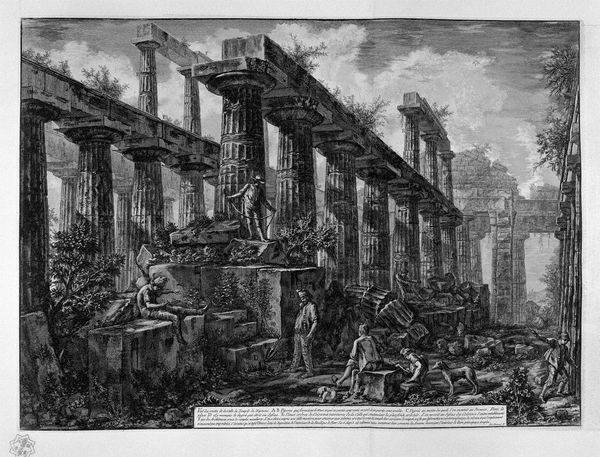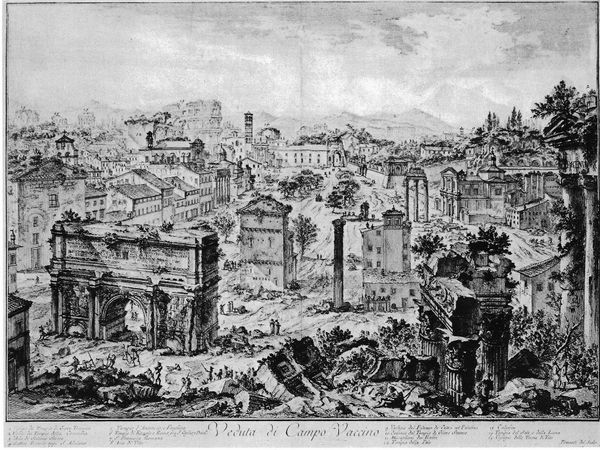
View the remains of the Baths of Diocletian than to St. Mary of the Angels
0:00
0:00
print, etching, architecture
# print
#
etching
#
romanesque
#
column
#
cityscape
#
architecture
Copyright: Public domain
Curator: Oh, wow. Looking at this, I immediately feel swallowed by a sense of grand, yet crumbling history. There's an incredible tension between the detail and the decay. Editor: Indeed! We're observing "View the remains of the Baths of Diocletian than to St. Mary of the Angels," an etching by Giovanni Battista Piranesi. What strikes you about it beyond that initial impression? Curator: Well, I'm intrigued by the human figures scattered amongst the ruins. They seem almost dwarfed, like afterthoughts, highlighting the overwhelming scale of what once was. There's a profound melancholy in that contrast, a reminder of the ephemerality of human endeavor against the relentless march of time. Like seeing a play performed in an empty coliseum, with no one in the audience to applaud it. Editor: Exactly! Piranesi frequently used the juxtaposition of figures and architecture to explore themes of grandeur and the sublime. Notice the meticulous rendering of architectural details, each brick, each column imbued with a sense of history and symbolic weight. He’s very subtly contrasting our temporal world against the eternal echo of Rome’s past. Consider the Baroque obsession with vanitas, and the use of ruins as symbols. What’s gone speaks to our potential for the same disappearance. Curator: You’re right. It’s like Piranesi's saying, “Remember this glory? Well, nothing lasts forever." Even empires turn to dust. I feel that in my bones. He almost romanticizes the ruin. Even a fallen empire retains its allure, maybe even increases its allure because it's like it's ripe with storytelling now. The etching becomes almost a commentary on the human condition, a bittersweet acknowledgement of our place in the grand sweep of history. Editor: Absolutely. The etching medium lends itself so well to conveying this sense of age and texture, capturing the play of light and shadow across the weathered stone. It reinforces this idea of impermanence, adding layers of emotional and intellectual complexity. We are drawn to history’s lessons. We see patterns and meaning here. And we're here doing what people do: looking, feeling, making sense of something bigger than ourselves. Curator: You've certainly given me a fresh way of appreciating its layered meaning. It's far more than just an image of old buildings; it's an invitation to contemplate history. Editor: It's a mirror to our anxieties and our passions. Thank you for unveiling a personal truth for our listeners.
Comments
No comments
Be the first to comment and join the conversation on the ultimate creative platform.
